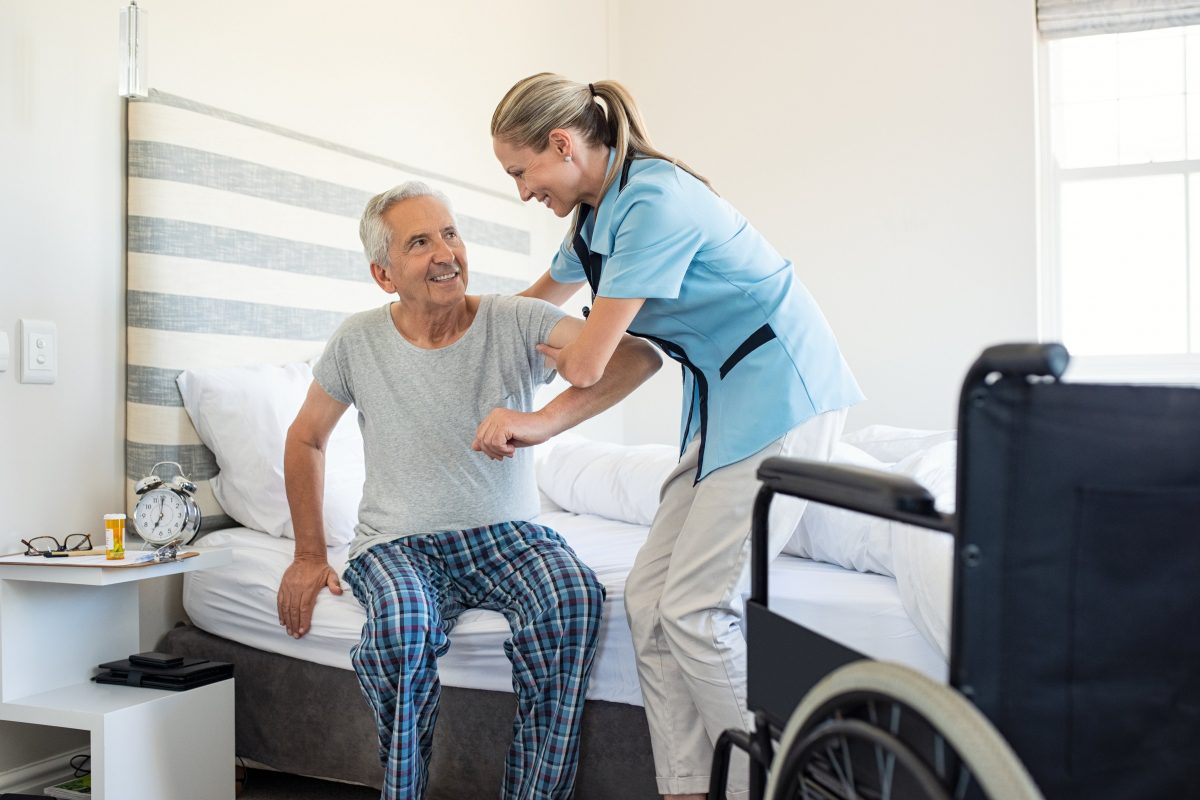Create a Comfortable Environment
Bedridden patients spend most of their time in bed, so it is important to make sure their environment is comfortable. Ensure that the bed is comfortable, with enough pillows to support their head and body. The temperature of the room should be warm enough to keep the patient comfortable but not too hot. Keep the room well-ventilated and free from clutter to reduce the risk of falls or accidents.
Proper Hygiene
Proper hygiene is essential when taking care of a bedridden patient at home. Bathe the patient regularly, and make sure their hair and nails are clean and trimmed. It is also important to change their bed sheets regularly and to wash their clothes frequently. Good hygiene practices can prevent infections and improve the patient's overall wellbeing.
Feeding the Patient
Bedridden patients may have difficulty swallowing or may need assistance with feeding. It is important to provide a balanced diet that meets their nutritional needs. Soft, easy-to-swallow foods like mashed potatoes, soups, and smoothies are recommended. Use a feeding tube if necessary, and make sure to clean it regularly to prevent infections.
Medication Management
Bedridden patients may need medication for pain relief, to treat an illness, or for other health reasons. It is important to keep track of the medication schedule and ensure that the patient takes their medicine as prescribed. Keep all medications organized and in a safe place, and make sure they are stored at the correct temperature.
Prevent Bedsores
Bedridden patients are at high risk of developing bedsores, which are painful and can lead to serious infections. It is important to turn the patient every few hours to relieve pressure on their skin. Use pillows or special cushions to support their body and to prevent pressure sores. Keep the skin clean and dry, and apply lotion to prevent dryness and irritation.
Keep the Patient Engaged
Bedridden patients can become lonely and depressed due to their lack of mobility and social interaction. It is important to keep them engaged and entertained. Read to them, play games or watch movies together, and encourage them to talk about their feelings. Providing emotional support can improve the patient's mental health and overall wellbeing.
Communicate with Healthcare Providers
If you are providing care for a bedridden patient at home, it is important to communicate with their healthcare providers. Keep track of the patient's medical history, medication schedule, and any changes in their health. If you notice any concerning symptoms or changes, contact their healthcare provider immediately.
Practice Proper Body Mechanics
Caring for a bedridden patient can be physically demanding, especially when it comes to lifting and transferring them. It is important to practice proper body mechanics to prevent injury. Bend your knees when lifting, keep your back straight, and use your leg muscles to lift. If necessary, use assistive devices like transfer belts or sliding boards to help with transfers.
Keep the Patient Safe
Bedridden patients are at high risk of falls and accidents. Keep the bed at a low height and use bed rails to prevent falls. Make sure the floor is clear of obstacles, and use non-slip mats in the bathroom to prevent slips and falls. If the patient needs to be transferred, make sure to do it safely and use proper body mechanics.
Take Care of Yourself
Taking care of a bedridden patient can be emotionally and physically exhausting. It is important to take care of yourself to prevent burnout. Take breaks when needed, get enough sleep, eat well, and stay hydrated. Ask for help from family and friends, and consider hiring a professional caregiver if needed.
